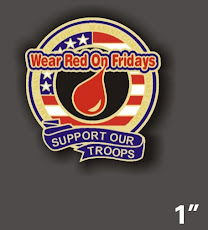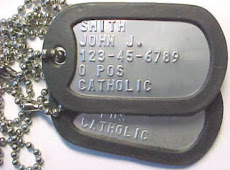Today is 12 years since that
infamous day of 9/11, and below is a fascinating account of a couple of unsung
heroes of that day.
The events of Sept. 11, 2001,
put an F-16 pilot into the sky with orders to bring down United Flight 93.
Late in the morning of the
Tuesday that changed everything, Lt. Heather “Lucky” Penney had her hand on the
throttle of an F-16 and she had her orders: Bring down United Airlines Flight
93. The day’s fourth hijacked airline
seemed to be hurtling toward Washington.
Penny, one of the first two combat pilots in the air that morning, was
told to stop it.
“I genuinely believed that was
going to be the last time I took off,” says Maj. Heather “Lucky” Penney,
remembering the September 11th attacks and the initial U.S.
Reaction.

Because the surprise attacks
were unfolding, in that innocent age, faster than they could arm the war
planes, Penny and her commanding officer went up to fly their jets straight
into a Boeing 757. “We wouldn’t be shooting
it down. We’d be ramming the aircraft,”
Penney recalls of her of her charge that day.
“I would essentially be a kamikaze pilot.”
For years, Penney, one of the
first generation of female combat pilots in the country, gave no interviews
about their experiences on September 11th (which included,
eventually, escorting Air Force One back into Washington’s suddenly highly
restricted airspace.) But 10 years
later, she is reflecting on one of the lesser-told tales of that endlessly
examined morning: how the first counterpunch the U.S. Military prepared to
throw at the attackers was effectively a suicide mission.
“We had to protect the
airspace any way we could,” she said last week in her office at Lockheed
martin, where she is a director in the F-35 program. Penney, now a major but still a petite blonde
with a Colgate grin, is no longer a combat flier. She flew two tours in Iraq and she serves as
a part-time National Guard pilot, mostly hauling VIP’s around in a military
Gulfstream. She take the stick of her
own vintage 1041 Taylorcraft tail-dragger whenever she can. But none of her thousands of hours in the air
quite compare with the urgent rush of launching on what was supposed to be a
one-way flight to a midair collision.
She was a rookie in the
autumn of 2001, the first female F-16 pilot they’d ever had at the 121st
Fighter Squadron of the D.C. Air National Guard. She had grown up smelling jet fuel. Her father flew jets in Vietnam and still
races them. Penney got her pilot’s
license when she was a literature major at Purdue. She planned to be a teacher. But during a graduate program in American
studies, Congress opened up combat aviation to women and Penney was nearly
first in line.
“I signed up immediately,”
she says. “I wanted to be a fighter
pilot like my dad.”
On that Tuesday, they had
just finished two weeks of air combat training in Nevada. They were sitting around a briefing table
when someone looked in to say a plane had hit the World Trade Center in New
York. When it happened once, they
assumed it was some yahoo in a Cessna. When
it happened again, they knew it was war.
But the surprise was complete. In
the monumental confusion of those first hours, it was impossible to get clear
orders. Nothing was ready. The jets were still equipped with dummy
bullets from the training mission.
As remarkable as it seems
now, there were no armed aircraft standing by and no system in place to
scramble them over Washington. Before
that morning, all eyes were looking outward, still scanning the old Cold War
threat paths of planes and missiles coming over the polar ice cap.
“There was no perceived
threat at the time, especially one coming from the homeland like that,” says
Col. George Degnon, vice commander of the 113th Wing at
Andrews. “It was a little bit of a
helpless feeling, but we did everything humanly possible to get the aircraft
armed and in the air. It was amazing to
see people react.”
“Things are different today,”
Degnon says. At least two “hot-cocked”
planes are ready at all times, their pilots never more than yards from the cockpit.
A third plane hit the
Pentagon, and almost at once came word that a forth plane could be on the way,
maybe more. The jets would be armed
within an hour, but somebody had to fly now, weapons or not weapons.
“Lucky, you’re coming with
me,” barked Col Marc Sasseville. They
were gearing up in the pre-flight life-support area when Sasseville, struggling
into his flight suit, met her eyes. “I’m
going to for the cockpit,” Sasseville said.
She replied without
hesitating. “I’ll take the tail.”
It was a plan. And a pact!
“Let’s go!”
Penney had never scrambled a
jet before. Normally the pre-flight is a
half-hour or so of methodical checks.
She automatically started going down the list.
“Lucky, what are you
doing? Get your butt up there and let’s
go!” Sasseville shouted.
She climbed in, rushed to
power up the engine, and screamed for the ground crew to pull the chocks. The crew chief still had his headphones
plugged into the fuselage as she nudged the throttle forward. She muttered a fighter pilot’s prayer. “God, don’t let me fuck up” and followed
Sasseville into the sky.
They screamed over the
smoldering Pentagon, heading northwest at more than 400 mph, flying low and
scanning the clear horizon. Her
commander had time to think about the best place to hit the enemy.
“We don’t train to bring down
airliners,” said Sasseville, now stationed at the Pentagon. “If you just hit the engine, it could still
glide and you could guide it to a target.
My though was the cockpit or the wing.”
He also thought about his ejection
seat. Would there be an instant just
before impact? “I was hoping to do both
at the same time,” he says. “It probably
wasn’t going to work, but that’s what I was hoping.”
Penney worried about missing
the target if she tried to bail out. “If
you eject and your jet soars through without impact…” she trails off, the
thought of failing more dreadful than the thought of dying.
But she didn’t have to
die. She didn’t have to knock down an
airliner full of kids and salesmen and girlfriends. The hijackers did that themselves.
It would be hours before
Penney and Sasserville learned that United 93 had already gone down in
Pennsylvania, an insurrection by hostages willing to do just what the two Guard
pilots had been willing to do: Anything and everything.
“The real heroes are the
passengers on Flight 93 who were willing to sacrifice themselves,” Penney
says. “I was just an accidental witness
to history.”
She and Sasseville flew the
rest of the day, clearing the airspace, escorting the president looking down onto
a city that would soon be sending them to war.
She’s a single mom of two
girls now. She still loves to fly. And she thinks often of that extraordinary
ride down the runway a decade ago.
“I genuinely believed that
was going to be the last time I took off,” she says. “If we did it right, this would be it.”










.jpg)


































7 comments:
Thanks for that story. I don't think I ever heard that before. Sept 11 is my birthday.
Thank you for posting this. I never knew the jets were not armed.
Happy Birthday, Linda. That can be a big a bummer as a Christmas birthday. But I hope you have a great day despite the event.
J&M I didn't either. I am so glad they didn't have to do 'the act', too.
That's absolutely fascinating.
Love,
Janie
Okay, peeps. I have been thinking about this and I have to ask myself why both would have to die. If Sasserville got there first and crashed into the cockpit, there would be no need to ram the tail. Or if Penny got there first, etc. There would have been no need for both to hit the plane.
Nice to write and talk about and received the praise from everyone, but I don’t see both doing it except to take one for the team. I truly believe that one would have landed… if they had found the flight.
You're right. A second person was really back-up.
Yep, knew about it, and I'm glad she's now coming out and telling the 'rest' of the story!
Post a Comment